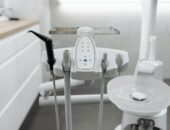Did you know that the look and feel of your clinic set the tone of how you work and treat your clients?
You spend the majority of your day in your office, and its interior design affects your productivity. According to a study, healthcare workers like nurses and caregivers are more likely to make mistakes when working in a poorly designed health facility, putting the patients’ safety at risk. On the other hand, a published paper in 2000 says that evidence-based environmental design of healthcare facilities improves medical results. For instance, a well-designed clinic or hospital can reduce a patient’s anxiety, lessen pain, and lower blood pressure.
In recent years, the future of medical facility interior designing has changed. The number of office theming companies like IDS Kids is quickly increasing. Patients are now becoming selective on where to go for healthcare services. As a result, you can see lavish designs and world-class technology when visiting the doctor’s office. Moreover, you can find unique and creative reception desks in reception areas of medical facilities because it’s the first place where patients will have a face-to-face interaction with medical personnel.
It may be a waste of money for many because their primary focus should be patient care, but unknown to them, there are significant impacts on the overall patients’ experience and caregivers’ performance.
Benefits of a Well-Designed Healthcare Facility
Reduce Stress
Being in the hospital is already stressful, so the interior design shouldn’t add more anxiety to patients, including family members, doctors, and nurses. Instead, it should serve as a way to lift their mood by creating a lively and energetic environment.
A room with natural light can have positive effects on the mental and physical health of patients inside. Imagine waking up in a dark room after your surgery. A study shows that visual art can improve patients’ mental health undergoing surgery, chemotherapy, and other severe procedures. Studies also show that women undergoing labor can forget their pain when a masterpiece catches their attention.
Prevent Infection
Interior design is not all about wall murals, ceiling design, decorations, arrangement of furniture but also improving the interior of a building to achieve a healthier environment for people using the space. In a healthcare setting, patients who are switching to private treatment and private rooms can avoid infection. A new study published in JAMA Internal Medicine suggests that single-patient hospital rooms most likely prevent multidrug-resistant organism transmission and health care related-infections.
In the past, being in a single patient private room was a luxury. Now, it is recognized as a new standard of care due to its critical role in patient safety, thus reducing the length of hospital days.
Overall Restful Experience
A noisy environment can affect the quality of care that a patient receives. In fact, it is stressful in general, not only for sick people but also the healthy ones. In the medical setting, it is more important. This can be minimized by designing rooms with identical layouts and additional space between adjoining walls.
Also, acoustically absorbent ceiling tiles and flooring can reduce noise, and carpets are known to be the most effective flooring to conceal sound. However, since it is difficult to clean thoroughly and quickly, they are not ideal for patient rooms. Instead, they are suited to lobbies and hallways.





